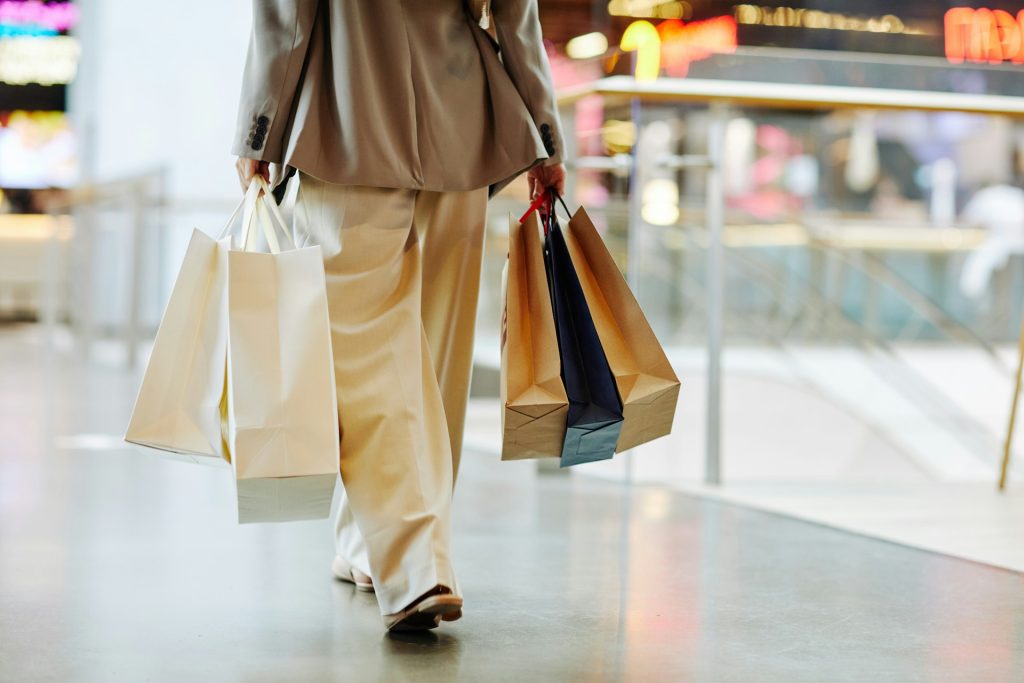Let’s face it: many of us have a rollercoaster relationship with money. One minute we’re celebrating a pay raise, a bonus, or a lucky cash win, and the next, we’re struggling to figure out how to pay our bills. Our finances can deeply affect our emotional well-being, leading to a complex dynamic between how we feel and how we choose to spend our hard-earned dollars. In a world where every advertisement and social media post seems to push us toward spending, it’s easy to get caught in the trap of emotional spending. In this guide, we’ll explore how emotional spending impacts our lives and offer practical advice to help you navigate this tricky landscape.
The Quick Fix
Many people turn to shopping for a quick fix to their emotional state. Buying a new outfit or treating yourself to a fancy dinner might bring a smile to your face in the moment, but the excitement often fades, leaving you with a guilty conscience and an empty wallet. You might find yourself reaching for credit cards or considering debt relief programs after overspending, leading to a cycle of financial stress.
Understanding Emotional Spending
Emotional spending is a common response to feelings such as stress, sadness, or even happiness. When we’re feeling low, a shopping spree might seem like the perfect remedy. Conversely, a celebration can trigger spending as a reward for hard work or achievements. While these moments can provide a temporary high, they often lead to negative consequences.
The Emotional Rollercoaster
Our emotions can lead us to make impulsive decisions, especially when it comes to spending. Here are some key emotional triggers that can result in unnecessary purchases:
- Stress and Anxiety
When life gets overwhelming, it’s common to seek comfort in material things. Retail therapy can provide a temporary escape, but it often leaves a lasting impact on your finances. You may feel a momentary lift after a shopping spree, but when the bills come due, that stress can return, often worse than before.
- Happiness and Celebration
On the flip side, moments of joy and success can also trigger emotional spending. You might feel the urge to celebrate a promotion or milestone by splurging on a big-ticket item. While treating yourself isn’t inherently bad, it’s crucial to ensure that your celebrations don’t compromise your financial stability.
The Cycle of Emotional Spending
Once you start down the path of emotional spending, it can be challenging to break free. The initial joy of shopping can lead to a cycle of spending, regret, and more spending. Here’s how this cycle typically works:
- Triggering Events
An emotional trigger—whether positive or negative—leads to the urge to spend. This could be anything from a bad day at work to a significant life event, like a birthday or graduation.
- Impulsive Purchases
Responding to that trigger, you make an impulsive purchase. This could be anything from a new gadget to a luxurious meal. In the moment, it feels good, almost like a reward for your hard work or a remedy for your stress.
- Short-Lived Satisfaction
The initial thrill of buying something new fades quickly. You might feel regret or guilt shortly after the purchase, realizing you didn’t really need the item or that you’ve overspent.
- Compounding Stress
That regret can lead to more stress, which might cause you to seek comfort again through spending. And just like that, the cycle continues, potentially leading to serious financial trouble.
Breaking the Cycle of Emotional Spending
Understanding the cycle of emotional spending is the first step toward breaking free from it. Here are some practical strategies to help you regain control over your spending habits:
- Identify Your Triggers
Start by identifying what emotional triggers lead you to spend. Keep a journal to track your emotions and spending habits. Note when you feel the urge to buy something and what emotions you are experiencing. This awareness is key to breaking the cycle.
- Create a Budget
Developing a budget can help you prioritize your spending. Allocate funds for necessities, savings, and a little for fun. Having a budget helps you see where your money is going, which can prevent impulse purchases.
- Find Alternatives to Shopping
When you feel the urge to shop as a coping mechanism, try to find healthier alternatives. Instead of hitting the mall, consider going for a walk, calling a friend, or engaging in a hobby that brings you joy without spending money. Finding alternative activities can help redirect your emotions in a positive way.
- Delay Purchases
Implement a waiting period for non-essential purchases. If you see something you want, wait 24 hours before buying it. This pause can help you evaluate whether you genuinely want or need the item, reducing the chance of impulse buying.
Seeking Support
Sometimes, overcoming emotional spending requires support from others. Consider reaching out to friends or family who can help hold you accountable for your spending. You might also look into financial support groups or workshops that focus on budgeting and managing emotions tied to spending.
Conclusion
The trap of emotional spending can be difficult to escape, but understanding the psychology behind it is crucial. By recognizing your triggers, creating a budget, and finding healthier alternatives, you can break the cycle of impulsive purchases and regain control over your finances. Remember, it’s okay to treat yourself every now and then, but being mindful about your spending can lead to a more secure and fulfilling financial future. Take the first step today and start building healthier spending habits!

